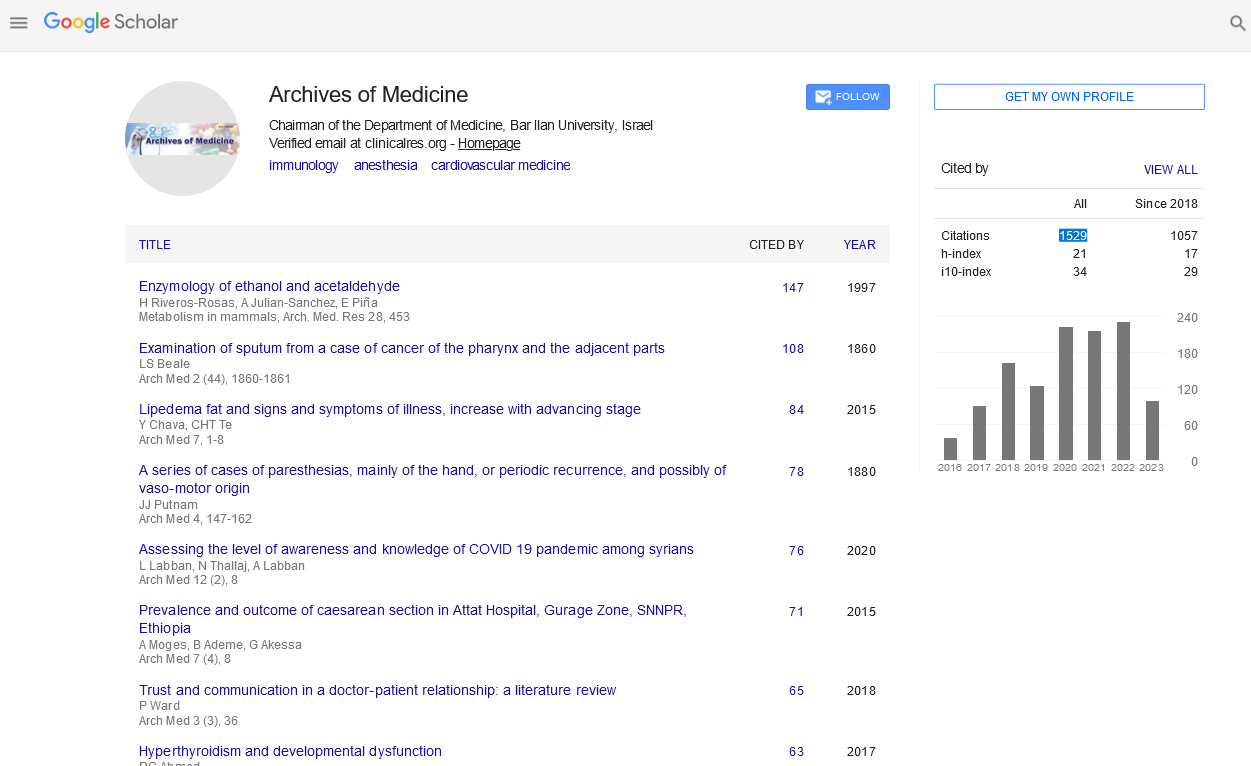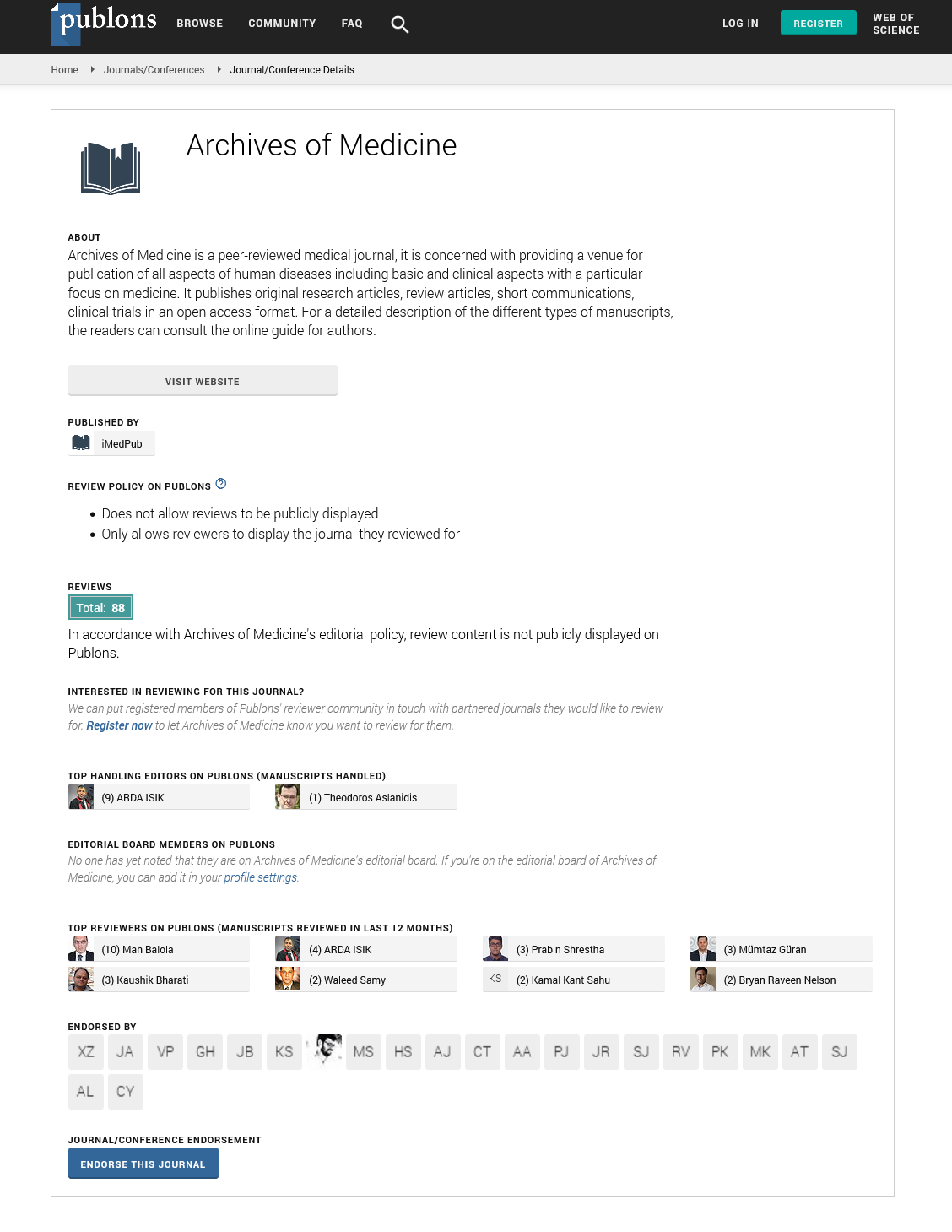Perspective - (2022) Volume 14, Issue 7
Social disparities: Systematic review of health care for the Afro-Brazilian population
Lima Dar*
Department of Microbiology, Suleyman Demirel University, Isparta, Turkey
*Correspondence:
Lima Dar, Department of Microbiology, Suleyman Demirel University,
Isparta,
Turkey,
Email:
Received: 25-Jun-2022, Manuscript No. ipaom-22-12984;
Editor assigned: 28-Jun-2022, Pre QC No. P-12984;
Reviewed: 17-Jul-2022, QC No. Q-12984;
Revised: 22-Jul-2022, Manuscript No. R-12984;
Published:
30-Jul-2022
Abstract
The number of medications currently on the market is incalculable,
and their prescription is steadily increasing, raising the risk of severe
effects. Currently, the entire population is exposed to a variety
of pharmacologic substances, the majority of which are toxic and
used without scientific explanation. Even more pharmaceuticals
are consumed without medical supervision or prescription,
unintentionally, with food, herbal remedies, and over-the-counter
medications. This result in widespread toxicity that is difficult to
detect, frequently goes unnoticed, and can be highly harmful.
Keywords
Communicable disease; Mouth; Nose; Eyes
Introduction
Afro-Brazilian population claims to health system access
increased in the second half of the 20th century. They had a
strong participation of popular movements and supported
the process that originated the Sanitary Reform and the
Brazilian Unified Health System (SUS) in the future.
However, even though this developing system promoted
universality, equity and integrity concepts, an environment
of inequalities, differences and iniquities was its real
configuration. The Annual Report of Racial Inequalities
in Brazil (2009-2010) showed a scenario of inequalities
that varied from reproductive health to dental treatment
It emphasized the disregard for the well-being of social
groups that are victims of racism, which is designed as a
socio and historical determined context. Thus, in Brazil of
the 21st century, white, Afro-Brazilian (Black and Pardo)
and Indigenous populations still occupy different social
spaces, which reflects directly in the most common social
indicators like schooling, work and health conditions
Thus, race as well as gender and sexual orientation are
social markers of difference, i.e. an explanatory variable for
inequalities.
Our hypothesis is that despite government efforts and
discussion generated on society, Public Inclusion Policies
have become incipient as they do not reach this population
as a whole and have discrete counter measurements when
they do so. But the extent to which social disparities show
the health care character of the Afro-Brazilian population is
still not quite clear in literature [1-5].
About the Study
Based on the government point of view, the Brazilian
Department of Health published the Política Nacional de
Saúde Integral da População Negra (PNSIPN - Integral
Health National Policy of the Black Population) in 2009,
approved by the National Health Board in 2006 and that
has been discussed since the creation of the Afro- Brazilian
population Technical Committee of Health in 2004. Sao
Paulo State was the precursor in this process, because it
was the first to incorporate the “race/color” subject in 1990
in health information systems, even though it was done
only because of the popular pressure. Nevertheless, the
population and health professionals seem to be unaware of
how racism impacts on life, access to services and quality
of care. It shows the need of a continuous elaboration of
studies in order to acquire updated data that reinforce
race equality fight. This study was based on the following guiding question: what is the health epidemiological profile
of the Afro-Brazilian population? This review highlights
Afro-Brazilian people as important ethnic creators in Brazil,
influencing several national sociocultural manifestations.
However, historically, Afro-Brazilian people have not been
included as a target population for state policies and only
after the 1988 Brazilian Constitution did social discussions
by these and other minority groups gain strength in the
national debate.
Conclusion
Our hypothesis is that despite government efforts and
discussion generated on society, Public Inclusion Policies
have become incipient as they do not reach this population
as a whole and have discrete counter measurements when
they do so. But the extent to which social disparities show
the health care character of the Afro-Brazilian population
is still not quite clear in literature.
Conflicts of Interest
The authors declare no competing interests.
All authors declare that the material has not been
published elsewhere, or has not been submitted to another
publisher.
Data Availability
Authors declare that all related data are available
concerning researchers by the corresponding author's
email.
Acknowledgments
The views presented in this paper are of the authors and
not of the organizations they represent.
REFERENCES
- Onuigbo MAC. Symptomatic uremia from bilateral obstructive uropathy secondary to metastatic urinary bladder cancer showing only unilateral hydronephrosis: A case report. NDT Plus. 2009;2:387-389.
Google Scholar, Crossref, Indexed at
- Naidich JB, Rackson ME, Mossey RT, et al. Nondilated obstructive uropathy: Percutaneous nephrostomy performed to reverse renal failure. Radiol. 1986;160:653-657.
Google Scholar, Crossref, Indexed at
- Spital A, Valvo JR, Segal AJ. Nondilated obstructive uropathy. Urol. 1988;3:478-482.
Google Scholar, Crossref, Indexed at
- Lameire N, Van Biesen W, Vanholder R. Acute renal failure. Lancet. 2005;365:417-430.
Google Scholar, Crossref, Indexed at
- Lyons K, Matthews P, Evans C. Obstructive uropathy without dilatation: A potential diagnostic pitfall. Br Med J. 1988;296:1517-1518.
Google Scholar, Crossref, Indexed at






